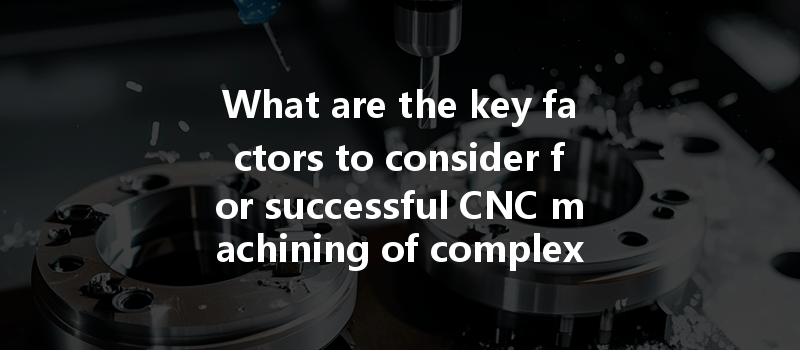: An Eye-Opening Fact About CNC Machining
Did you know that in 2022, the global CNC machining market was valued at approximately $72 billion and is expected to reach around $90 billion by 2027? This staggering growth underscores the increasing reliance on CNC machining technologies in various industries, especially when it comes to creating complex geometries. The ability to manufacture intricate designs with precision and speed has transformed industries ranging from automotive and aerospace to medical devices.
But with this transformation comes a set of challenges that must be addressed to successfully machine complex geometries. So, what are the key factors to consider in this demanding environment? In this article, we will explore these factors in detail, offering practical solutions and expert insights that can help engineers, manufacturers, and hobbyists alike navigate the complexities of CNC machining.
Understanding CNC Machining: The Basics
Before delving into the factors influencing the machining of complex geometries, let’s briefly review what CNC machining is. CNC, or Computer Numerical Control, is a manufacturing process that utilizes computer software to control machine tools. This technique allows for highly accurate and repeatable machining processes, making it ideal for producing parts with intricate designs.
The Importance of Complex Geometries
Complex geometries are designs that incorporate multiple contours, sharp angles, and intricate features. These designs are often essential in high-performance applications where traditional manufacturing techniques would struggle to achieve the required precision. The demand for complex geometries is driven by several factors:
However, manufacturing these advanced designs requires careful consideration of various factors. Let’s explore the vital aspects to keep in mind for successful CNC machining of complex geometries.
Key Factors for Successful CNC Machining of Complex Geometries
The materials chosen for CNC machining significantly influence the complexity that can be achieved. Some materials are inherently more challenging to machine due to their hardness, toughness, or thermal properties. Common materials used for complex parts include:
Solution for Material Selection
Selecting the right tools is essential for achieving the desired results in CNC machining of complex geometries. The tool must be capable of accurately cutting the desired shapes without causing excessive wear or breakage.
Solution for Tool Selection and Design
Not all CNC machines are created equal. The capability of the machine plays a crucial role in successfully machining complex geometries. Key features to consider include:
Solution for Machine Capability
Programming plays a critical role in CNC machining, particularly for complex geometries. The way a tool path is programmed can significantly affect machining efficiency and product quality.

Solution for Programming and Tool Path Optimization
Machining complex geometries often generates excessive heat, which can lead to tool wear and damage. Proper cooling and lubrication are necessary to maintain performance and achieve the desired finish.
Solution for Cooling and Lubrication
Quality assurance processes are essential to ensure that complex geometries meet the specified tolerances and standards. Regular inspections during and after machining can prevent costly mistakes.
Solution for Inspection and Quality Control
Many machining strategies can be employed to approach complex geometries effectively. Understanding the different cutting techniques is crucial for maximizing efficiency and minimizing errors.
Solution for Machining Strategy and Cutting Techniques
The competence of the CNC machinists operating the machines can dramatically influence the precision and success of machining complex geometries. Skilled operators can troubleshoot and adjust parameters effectively, ensuring the best outcomes.
Solution for Operator Skill Development
The cost associated with machining complex geometries can vary significantly based on material, machine time, and labor. Understanding the economic aspects can help manage budgets while still achieving high-quality outcomes.
Solution for Economic Considerations
: A Recap of Core Techniques for CNC Machining of Complex Geometries
In summary, CNC machining of complex geometries presents a myriad of challenges and considerations that demand careful planning and execution. From the selection of materials and tools to the optimization of machining strategies and the development of skills among operators, each factor contributes to successful outcomes.
Why This is Important
Understanding these key factors is vital for manufacturers looking to stay competitive in an increasingly demanding marketplace. As technologies evolve and industries push for innovative designs, the significance of mastering CNC machining of complex geometries will only grow.
By applying the solutions and insights discussed in this blog, manufacturers can enhance their performance, reduce costs, and improve customer satisfaction. Maintaining a focus on these factors ensures that your machining operations can successfully meet the challenges posed by intricate designs, ultimately leading to superior products and greater market success.
Make it a priority to revisit these insights regularly. In the world of CNC machining, staying ahead of the curve can make all the difference in delivering quality, performance, and innovation.


